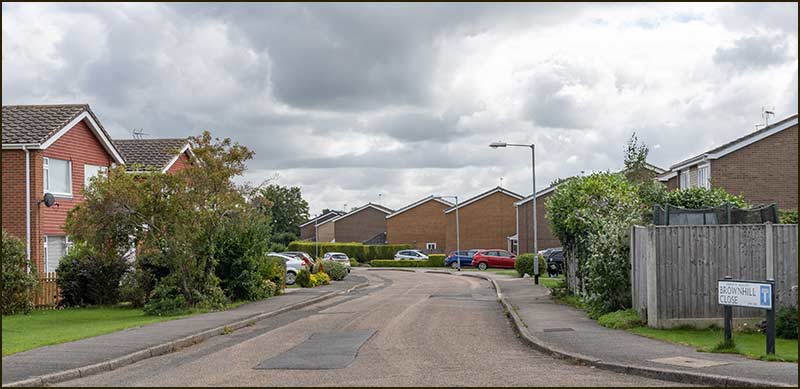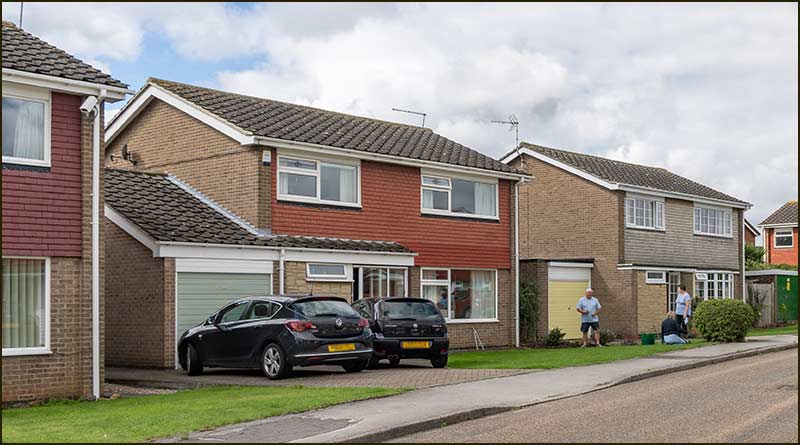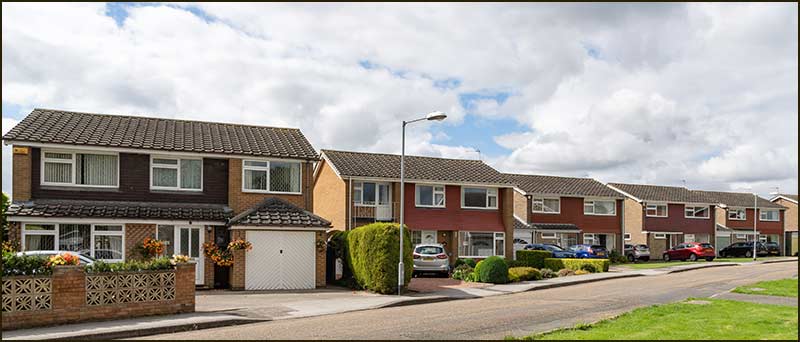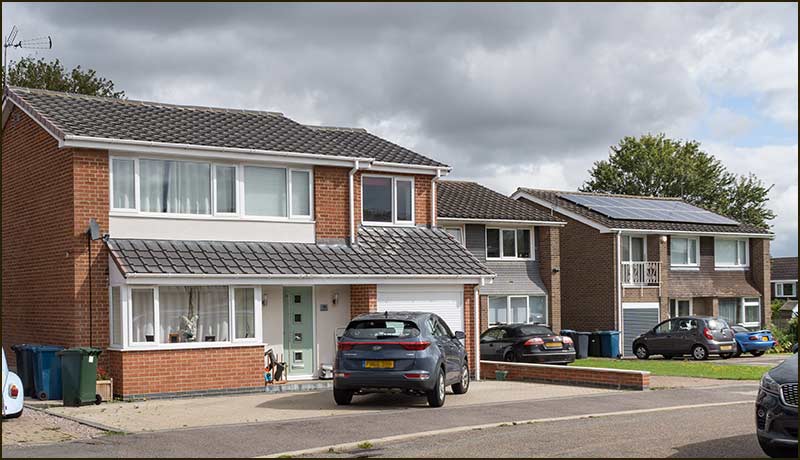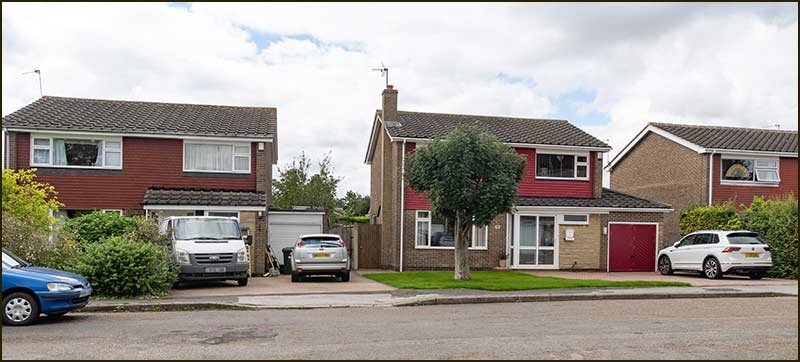Cropwell Bishop Streets: — Brownhill Close (27-11-20)

Brownhill Close; how did it get its name. If you are looking around for mounds of brown soil then you clearly don’t know how the Parish Councillors of the 1970s operated when choosing a name for a new street.
They referred to the map that accompanied the 1804 Enclosure Act. They looked at the names of landowners on the parish map and, time and again, would pick one. Where possible, the street name would be a reflection of the person who owned the land it stands on.
With that in mind, let’s look at the map in the region of Brownhill Close.

George Brownhill owned 3 fields in Cropwell Bishop in 1804. The one closest to Brownhill Close is of interest to us.
Compare its location with a street map of Cropwell Bishop and you see the problem faced by Parish Councillors.

Just four people owned the land now occupied by over a dozen streets: there are not enough names to go around. Also, the land that George Brownhill owned is where Hoe View Road now is.
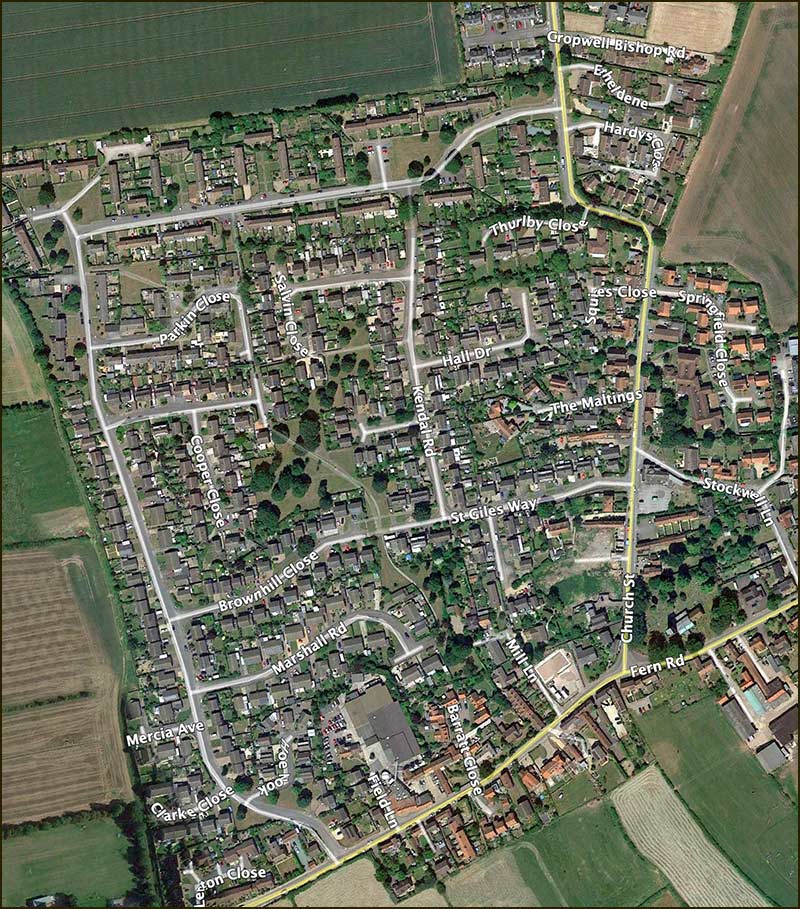
Brownhill Close appears to occupy land owned by Mercier or Marshall, but their names had already been allocated to other streets, so the name of Brownhill was dragged from its Hoe View Road spot and given to Brownhill Close.
So, now we know the person who Brownhill Close was named after. Well, yes and no.
When trying to trace ancestors, the national census is a wonderful source of information. It is essentially, a count of the population of the country, but usually lists every home, its occupants, their ages and their relationship to the ‘head’ of the household.
The first was held in 1801 and has been held every 10 years thereafter — except 1941 during the second World War.
The earliest one available online is 1841, and the most recent is 1911. Individual records are kept secret for 100 year – the 1921 census will be released in 2022.
From 1801 to 1831 the names were collected locally and, probably as a result, are not currently available online. This makes it more difficult to collect information prior to 1841, but not impossible.
I have constructed the family tree for the Brownhills of Cropwell Bishop. Online birth and death records proved useful, but the most telling details were revealed by real-world records in Cropwell Bishop: the graves in St Giles Churchyard.
At this point, I must express my gratitude to Denis and Edith Smith, late of Cropwell Bishop (their daughter, Jane Jones, lived on Fern Road until recently).
In the days before the internet existed, they published the ‘St Giles Churchyard Survey for Cropwell Bishop’. Maybe not a booklet for everyday reading, but invaluable for research. They even used church records to correct some errors made by stonemasons. Apparently, it was not unusual for gravestones to be cut years after a death, and so errors became inevitable.

The family tree reveals three George Brownhills but, in 1804, one was three years old – a bit young to own land. The older George Brownhill was born in 1744 and was 60 years old in 1804. His son, George, was 29 years old. Which one owned the land on the map, I wonder.
Tax documents show that a George Brownhill in Cropwell Bishop was a farmer and landowner in 1798. In that year older George was 54 and younger George was just 21. This convinces me that the older George was the landowner shown on the 1804 map.
As far as Brownhill Close is concerned, it makes no difference, the name is the same, but maybe we can decide which was the most deserving to have a street named after him.
Older George was born in 1744, and married Elizabeth Pilkington in 1772. They were both from Cropwell Bishop. George was a farmer here but we have no idea where his farmhouse was.
As you read this in your home in Cropwell Bishop, ask yourself, could George have passed nearby, could he have walked through your garden. During his 68 years as farmer, he must have trod every blade of grass in the parish, so he must have passed through your home.
Could it be that George and Elizabeth lived on the very land you are now living on. Well, if you are living on one of the old roads here, then they could have done. One person in Cropwell Bishop will certainly be living over the foundations of their house – maybe yours.
Did they have a hard life: most certainly – just look at the family tree. George and Elizabeth’s first and third son lived past middle age, but during one 11-year period, Elizabeth lost 5 children at birth.
George had already experienced sorrow as a teenager, when his older sister, 24-year-old Martha, had died giving birth to her baby – who also died.
Elizabeth died in 1804 when she was 52 years old.
In spite of all this sadness, it seems he made a success of his farming. He also appears to have made a substantial contribution to the smooth running of the village.
He was church warden for a year and also took on the role of village constable for 10 years.
George died in 1813 and his eldest son, George, inherited the farm and continued as the Brownhill farmer of the village.
However, he seems to have also inherited the poor luck of the Brownhill family. His youngest brother, William, died just 9 months afterwards at the age of 26. And two years later, his youngest sister, Martha, died at the age of 23, after only three years of married life.
George had married his wife Hannah in 1799. There is no evidence of them having any children but, like his father, George took on the job of church warden and continued in the role for 8 years.
He also served on a Grand Jury at Nottingham County Sessions in 1830. Apparently, a grand jury generally consisted of ‘gentlemen of high standing in the county’. So, George had achieved high standing, but his good fortune would not last.
In 1834, his wife Hannah died: she was only 52 years old. That same year, his younger brother, Thomas, also died. Thomas had been living in Birmingham where he had moved with his wife, Sarah Barratt of Colson Bassett.
Three years later, George died at the age of 64, and his farm, along with all his possessions, were auctioned off. It was the end of the line for the Brownhills in the village.
The auction in 1837 was advertised in a Nottingham newspaper. As well as the farmhouse and its furniture, there were farming machines, implements, sheep, pigs, horses – and also supplies of wheat, barley and hay.
The auction was held at the farmhouse, but, as I have already mentioned, we don’t know where that was in Cropwell Bishop.
During the last two years of his life, George would have reflected on the fact that, in spite of being the eldest of 9 brothers and sisters, he was now the only one alive.
However, he did have a nephew who would carry forward the Brownhill name in Birmingham – another George Brownhill.
Now that we know the history of the George Brownhills of Cropwell Bishop, who do we think is the most deserving of having a street named after him. I think it has to be the Older George who died in 1813.
But if history had been different, and the Enclosure Act had happened in 1814 instead of 1804, then it would have been younger George.
If anyone asks you, just say Brownhill Close was named after George Brownhill, farmer, and leave it at that.
It is intriguing to think that there may be Brownhill family members in Birmingham today, totally unaware that a street is named after one of their ancestors. If they search the internet, will Google lead them to this page, I wonder.
Tony Jarrow
Note:
Thanks to Anne Terzza and Pam Barlow for their help with this article.
The row of five Brownhill family graves present the bare facts of their lives and are a sad reminder of the struggle to get a life – and keep it – 200 years ago.



Also, their 5 children who died in infancy: John (1775), Martha (1780), Mary (1781), John (1782) and William (1786)
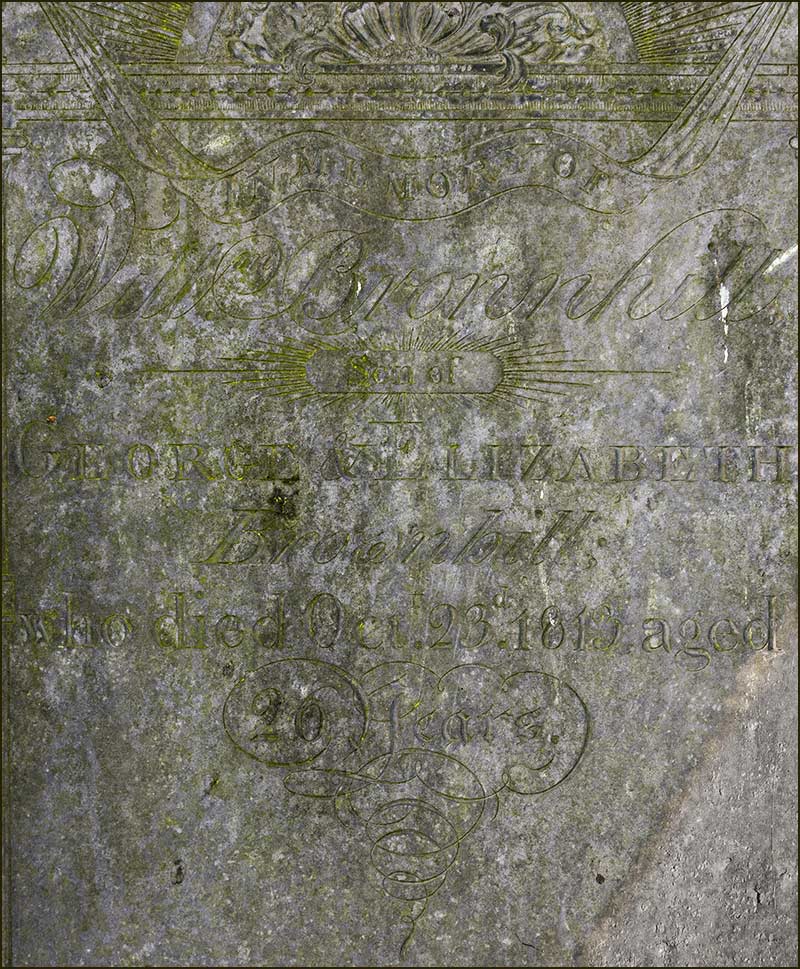
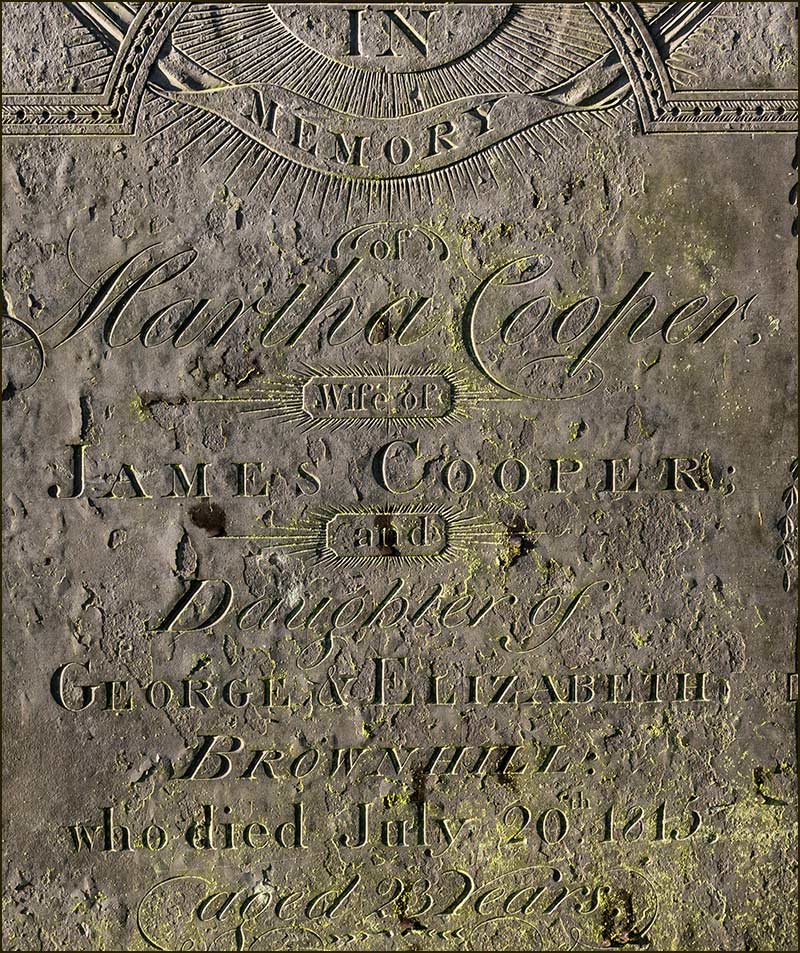
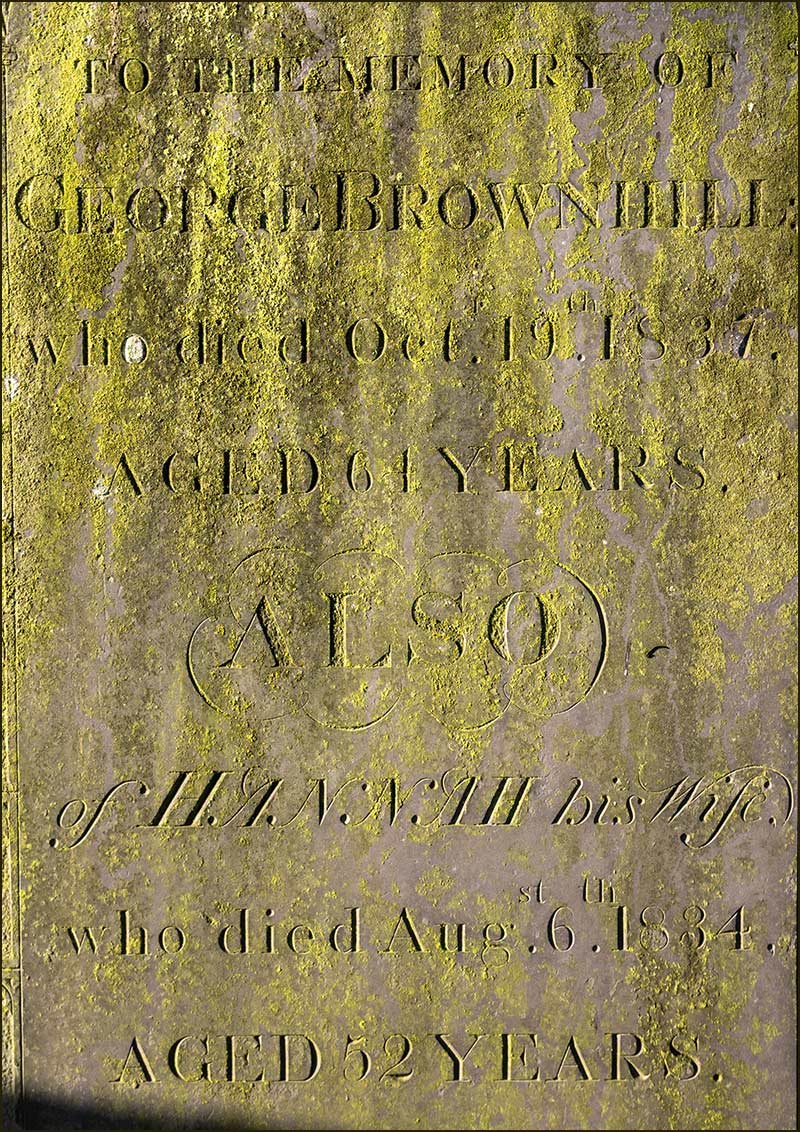
Brownhill Close today (September 2020)
